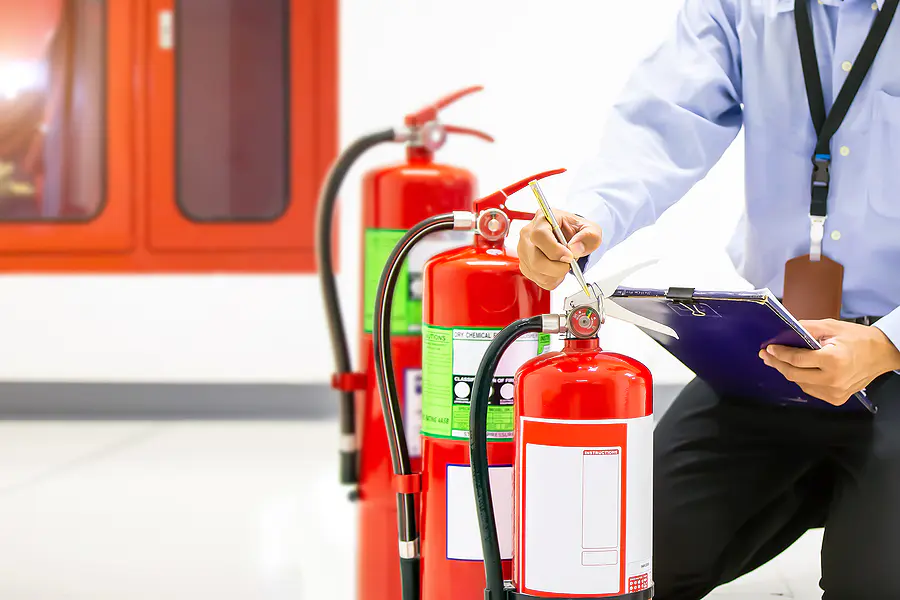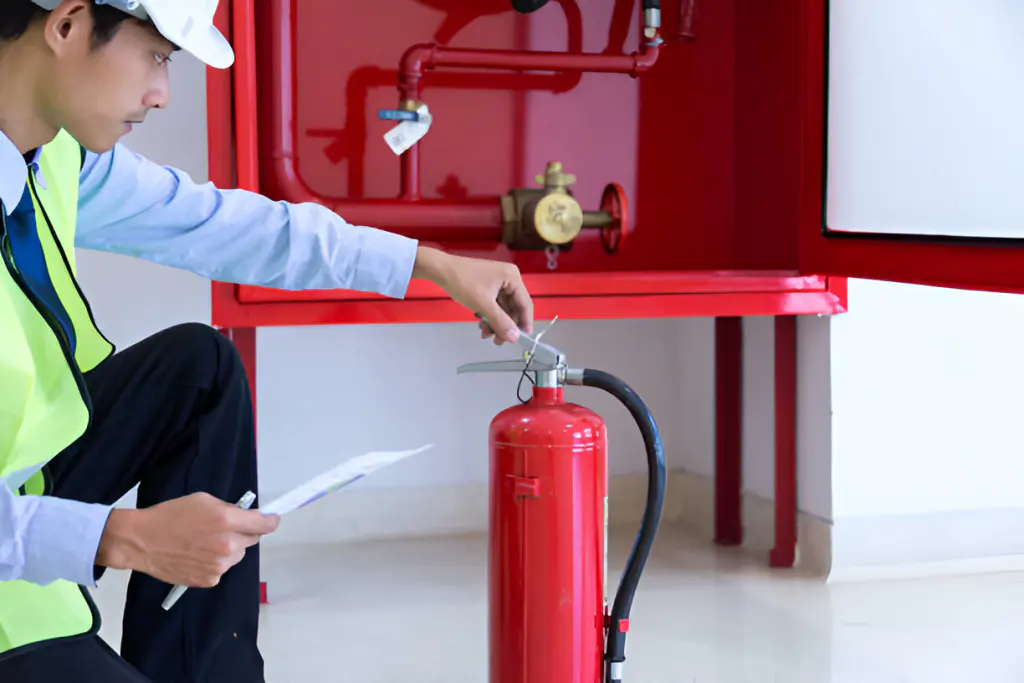As you look ahead to 2025, it’s crucial to stay updated on the latest office fire safety regulations to ensure your workspace is not only compliant but also optimally safe for everyone. You’ll need to evaluate how these new standards impact your current fire safety protocols and training programs. While the guide provides a comprehensive framework for risk assessment and emergency preparedness, integrating these into your daily operations might pose some challenges. Consider the implications of overlooking these regulations—could your business afford the legal and ethical consequences? Let’s explore how you can effectively implement these practices to avoid any risks. Let’s discover Office Fire Safety Regulations A Practical Guide for 2025.
Understanding Fire Safety Compliance
To ensure your office remains a safe working environment, it’s essential to understand fire safety compliance. Mastery of this topic not only safeguards your team but also ensures you adhere to legal standards which can mitigate risks of severe penalties.
You need to stay current with regulatory updates impacting fire safety protocols. This entails regularly reviewing amendments in fire safety legislation which can influence your office’s compliance requirements. For instance, updates in building codes or changes in fire extinguisher mandates must be integrated promptly into your safety strategies.
Moreover, conducting regular fire safety audits is pivotal. These audits help you pinpoint potential compliance gaps in your existing fire safety measures. An auditor will assess your fire safety equipment, evacuation procedures, and employee training programs to ensure they meet the latest standards.
If discrepancies are found, you’ll be advised on necessary adjustments that align with new regulations. You mustn’t view these audits as mere formalities but as essential tools that enhance your preparedness.
They provide a framework for continuous improvement in fire safety, ensuring your office isn’t only compliant but also a model for best practices in workplace safety.
Assessing Workplace Fire Hazards
Building on your understanding of fire safety compliance, the next step is to assess potential fire hazards in your workplace. You must systematically approach fire hazard identification to ensure no potential risks are overlooked. Effective risk assessment techniques are crucial for a thorough evaluation. You’ll first need to identify sources of ignition, such as electrical equipment and heating devices, and then match these with possible fuel sources like paper, plastics, and textiles within your office.
Next, evaluate the effectiveness of your current fire detection systems and control measures. Are they adequate and well-maintained? Do they comply with the latest regulations? This step isn’t just a formality; it’s a critical safeguard for your staff and assets.
To streamline this process, consider the following table which categorizes common office fire hazards and corresponding risk assessment actions:
| Fire Hazard Sources | Risk Assessment Actions |
|---|---|
| Electrical Equipment | Inspect for damage, and ensure compliance with safety standards |
| Flammable Materials | Inventory control, secure storage protocols |
| Human Error | Regular training, clear protocol postings |
Utilize this framework to meticulously inspect and evaluate each potential hazard. Remember, identifying risks accurately is foundational to enhancing fire safety in your workplace.
Fire Prevention Strategies
Effective fire prevention strategies are crucial for maintaining safety in your office environment. To minimize risks, you must rigorously manage flammable materials. Ensure that these items are stored in non-combustible containers and kept away from heat sources.
It’s essential to implement strict policies that govern the use and disposal of these materials, reinforcing the importance of vigilance.

Regular fire drills are another key component. You shouldn’t just conduct these drills; they need to be systematic and reflective of potential real-life scenarios. Each drill should be analyzed to identify weaknesses in your office’s fire response strategy, ensuring continuous improvement.
Educate your staff not only on how to evacuate but also on how to use fire extinguishers and other firefighting equipment effectively.
Moreover, maintaining clear access to all exits at all times is non-negotiable. Regular checks should be conducted to ensure that nothing obstructs these pathways.
Additionally, keep all fire safety equipment well-maintained—check smoke detectors, fire sprinkler systems, and fire extinguishers regularly to ensure they’re functional when needed.
Emergency Response and Evacuation Plans
Developing a comprehensive emergency response and evacuation plan is essential for ensuring your office’s safety during a fire. You must identify all potential evacuation routes and ensure they’re marked and free from obstructions.
Regularly updating these plans is crucial as changes in office layout or personnel can impact the effectiveness of existing routes.
Emergency drills play a pivotal role in preparedness. You’re not just going through the motions; these drills allow you to test the viability of evacuation routes and refine your approach based on real-world scenarios.
It’s advisable to conduct these drills semi-annually to maintain a high level of readiness among your staff.
Furthermore, your evacuation plan should include a system for accounting for all employees post-evacuation. Designate assembly points that are a safe distance from the building and ensure these locations are well-known and accessible to everyone.
Communication is key during an actual emergency, so establish a protocol for relaying information both during and after the evacuation.
Fire Safety Training for Employees
Ensuring every employee receives thorough fire safety training is a fundamental step toward maintaining a secure office environment.
You must comprehend and execute regular fire drills to ensure readiness in the event of an actual emergency. These drills familiarize you with escape routes and procedures, reducing panic and confusion if a fire occurs.
You’ll also find that clear, visible safety signage plays a critical role. It’s your guide during emergencies, pointing towards exits and equipment. Familiarize yourself with these signs as part of your training. Knowing what each symbol means can shave precious seconds off your evacuation time.
Effective fire safety training also involves understanding the different types of fires and the suitable methods for extinguishing them. This knowledge isn’t just regulatory—it’s potentially lifesaving.
You’ll learn which fire extinguisher to use and, crucially, how to use it correctly.
Maintaining Fire Safety Equipment
Beyond training, it’s crucial to regularly maintain your fire safety equipment. Ensuring that each device functions optimally not only complies with legal standards but also significantly boosts your office’s preparedness for any fire-related emergencies.

Here’s a concise guide on key maintenance tasks:
- Fire Extinguisher Inspections: You must perform monthly checks to verify that all fire extinguishers are accessible, fully charged, and undamaged. Annually, hire a certified professional to conduct a more thorough inspection and maintenance.
- Smoke Detector Maintenance: Test smoke detectors monthly by pressing the test button. Replace batteries annually, and the entire unit every ten years or according to the manufacturer’s guidelines.
- Sprinkler System Checks: Ensure that your fire sprinkler system is free from obstructions and corrosion. Have a professional inspect the system annually to test its functionality and hydraulic conditions.
- Emergency Lighting: Regularly test emergency lights and exit signs to ensure they operate during power failures. Replace batteries as recommended by the manufacturer.
Adhering to these steps will safeguard your workplace and enhance fire safety.
Conclusion
You’ve explored the key elements of fire safety compliance for 2025. Now, it’s essential you consistently assess hazards, implement strong prevention strategies, and maintain updated emergency plans. Ensure your employees are well-trained and all safety equipment is in top condition. By doing so, you’ll not only protect your team but also align with legal requirements, avoiding costly penalties. Stay vigilant and proactive in fostering a safe workplace. Remember, your diligence is crucial in preventing fire-related disasters.









